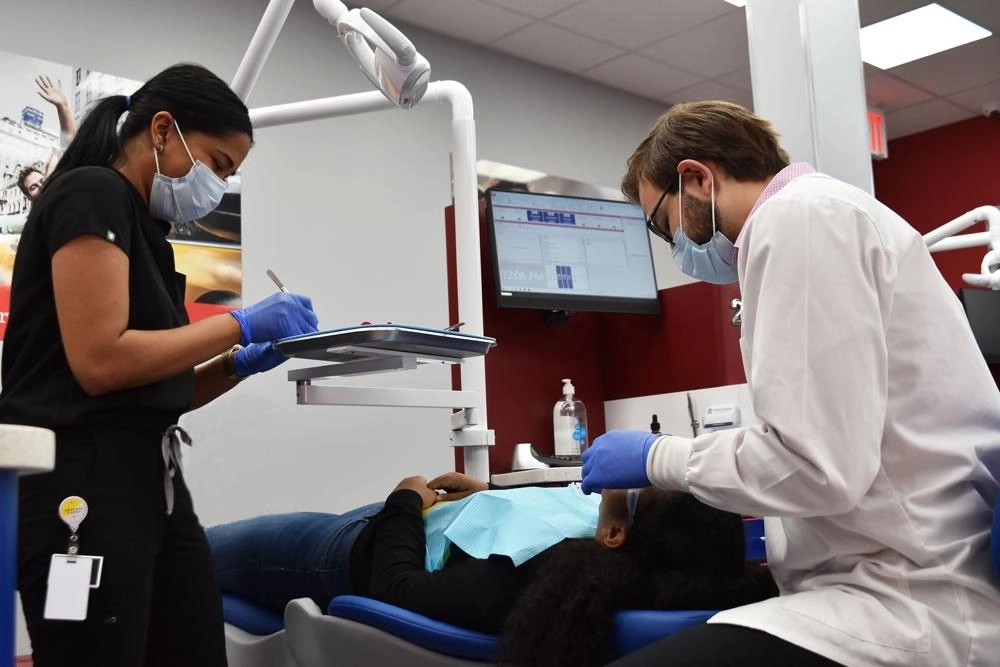Dental Primary Plans
If your family is enrolled in UnitedHealthOne dental primary plans, there may be benefits for your children. These plans often include orthodontic coverage. This coverage is for kids under 19, as long as they qualify. It’s important to check your specific plan details to understand what is covered.
However, it’s also crucial to note that cosmetic dentistry, including services like Invisalign, is not a covered service under UnitedHealthOne plans. Such treatments are considered non-essential and are therefore excluded from coverage.
Furthermore, that “cosmetic dentistry” is listed as an unpayable service under any circumstance, pursuing receiving Invisalign coverage through UnitedHealthOne may not be the best idea for you and your family. For more information, review their Dental Primary Plan or speak with a UnitedHealthOne representative directly.
Invisalign Coverage

Cigna offers three dental plans, but as of now, only the Cigna Dental 1500 plan will offer orthodontic benefits. These benefits include Invisalign — and you may be eligible to cover up to 50% of your orthodontic provider’s treatment cost through that coverage.
However, there are important considerations to keep in mind. After enrolling in the 1500 plan, you must wait at least one year before starting your treatment. Additionally, this plan includes a lifetime limit of $1000 per person. It’s crucial to consider these factors, such as the lifetime limit, when planning your orthodontic care with Invisalign under the Cigna coverage.
Orthodontic Care Options

Certain Aetna plans may offer coverage for orthodontic appliances and Invisalign clear aligners. However, given that plan parameters can vary, it’s important to consult your provider about plan parameters directly. You can also refer to Aetna’s official Orthodontic Care FAQ .
When exploring Aetna orthodontic care options and age limits, it’s important to know your plan details. If your plan includes orthodontic benefits, you don’t need a referral.
However, for patients under an Aetna DMO, or Dental Maintenance Organization, there’s a key limitation. Coverage is restricted to in-network orthodontists only. This means you must choose an orthodontist who is part of the Aetna network to receive benefits.
Another aspect to consider is age limits, particularly relevant for certain treatments. For instance, older patients interested in Invisalign clear aligners should check if their plan has any age restrictions. It’s crucial to review your treatment plans carefully, including options like lingual braces, to ensure they align with your coverage and needs. Understanding these details helps you make informed decisions about your orthodontic care.
Dental Benefits

Unfortunately, it is highly unlikely that patients with Blue Cross/Blue Shield plans will be eligible to receive coverage under their respective plans. Orthodontic discounts are not mentioned under any of their dental plans, but they do mention that “cosmetic” treatments are not covered.
If you’re a patient over the age of 18, it’s almost certain that your Invisalign treatment will be considered a cosmetic procedure by Blue Cross/Blue Shield, even if you’re seeking it out for more serious conditions. So, if you’re seeking orthodontic coverage, Blue Cross/Blue Shield dental plans are not the ideal source for that.
Dental Insurance on Invisalign

As one of the nation’s largest dental insurance providers, it would be odd if Delta Dental didn’t offer insurance coverage for orthodontics and Invisalign clear aligners. Fortunately, they do; their comprehensive allowance options include all steps of treatment and post treatment , but only covers comparative standard treatment cost.
When considering Invisalign, it’s important to know that Delta Dental insurance may not cover it. This is crucial information for anyone in the United States looking into different types of braces, including ceramic braces. It’s essential to read policy of delta dental insurance on Invisalign fine print.
Invisalign, while popular for improving oral health, might lead to additional fees not covered by your plan. Preventive care is often a focus of dental plans, but Invisalign is usually seen as a cosmetic or orthodontic treatment. Therefore, thoroughly review both your insurance details and your dental care provider’s policies before making a decision. This ensures you understand all potential costs and coverage.
Invisalign For Veterans?

If you are an active-duty service member, veteran, or related to one, you may be eligible for reduced-cost Invisalign treatment in NY or NJ. USAA has an option for orthodontic coverage, though given that they partner with Cigna, waiting periods to take advantage of those discounts will apply.
In New York, that means a 12-month waiting period, but New Jersey patients will only be subject to a 6-month waiting period. Much like Blue Cross, USAA does strictly scrutinize “cosmetic” procedures — meaning younger patients may have better luck receiving better Invisalign discounts under a USAA dental plan than older ones. For more information, review their official Dental Disclosures page or consult them with any questions directly.
Medicaid Cover Invisalign Treatment?

Patients under the Medicaid program in New York, New Jersey, and other areas cannot get Invisalign clear aligners. This is because Medicaid has a strict policy against covering cosmetic procedures. If you have Medicaid and need orthodontic treatment, your only option is metal braces. These braces are effective for moving your teeth into the correct position.
When you file a claim for orthodontic treatment, remember that traditional braces are a covered expense. While they often include rubber bands, they are a reliable choice for straightening your teeth. Be aware of any pocket cost that might not be covered by Medicaid. Also, consider using a flexible spending account (FSA) to manage these expenses.
With insurance or without insurance, there are plenty of options to reduce the cost of your Invisalign treatment in NY or NJ.

